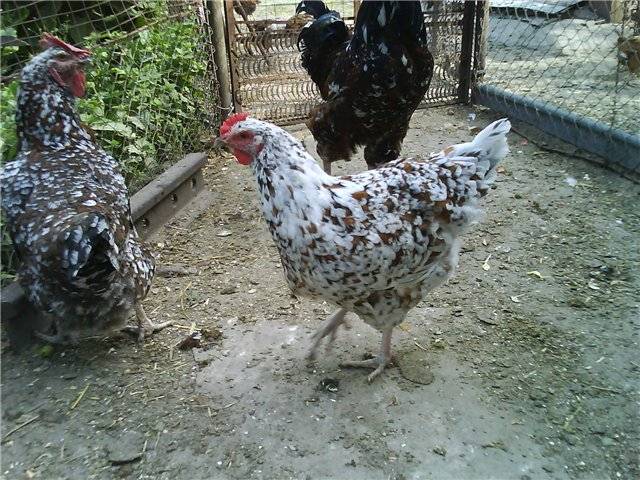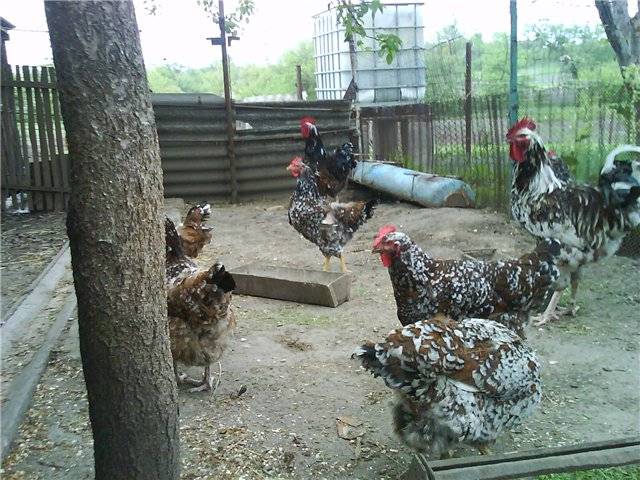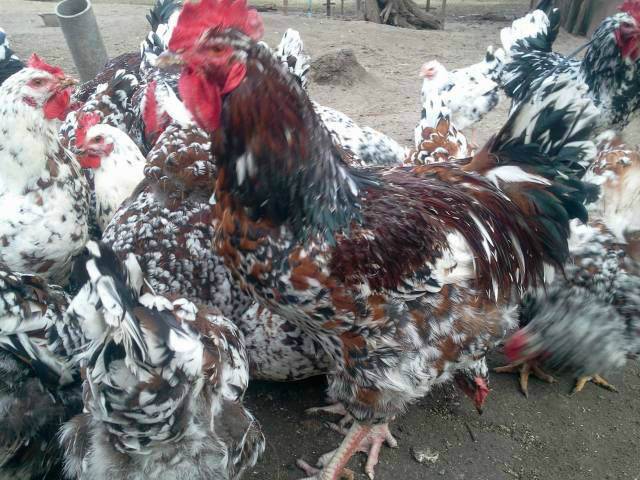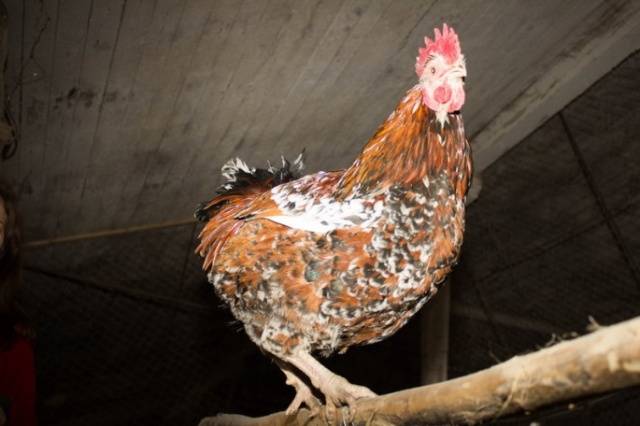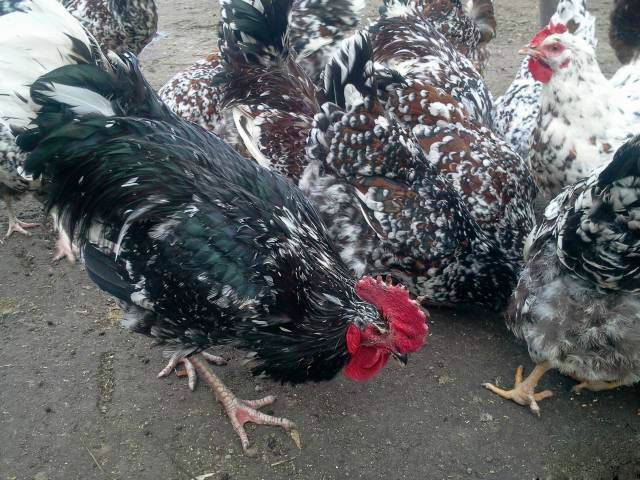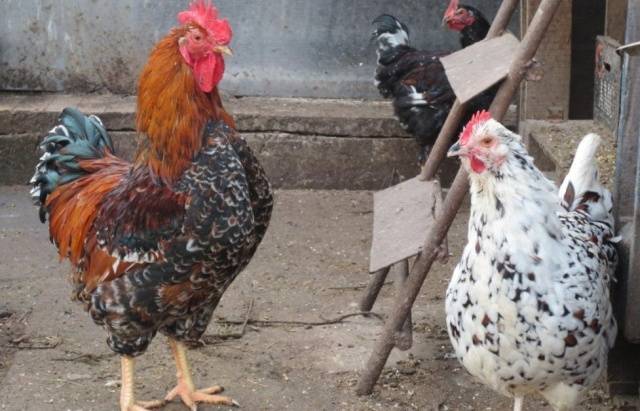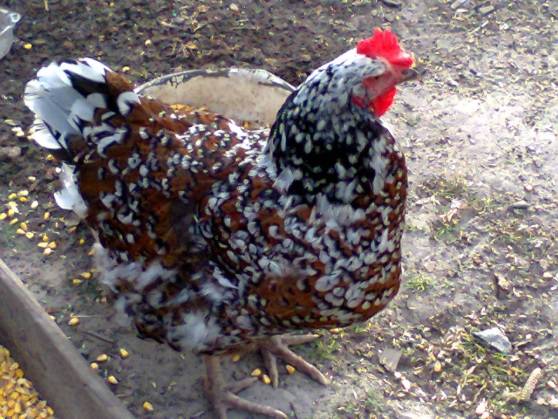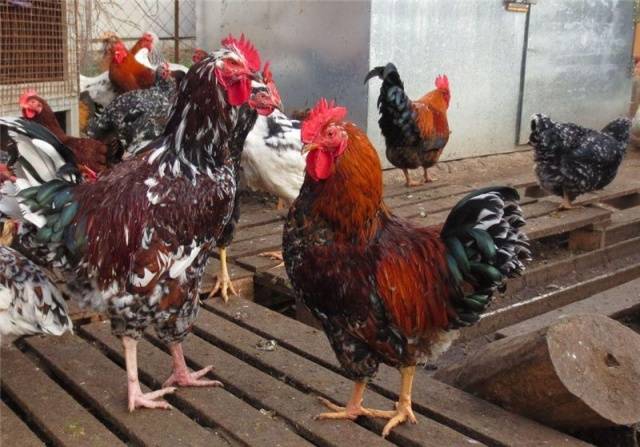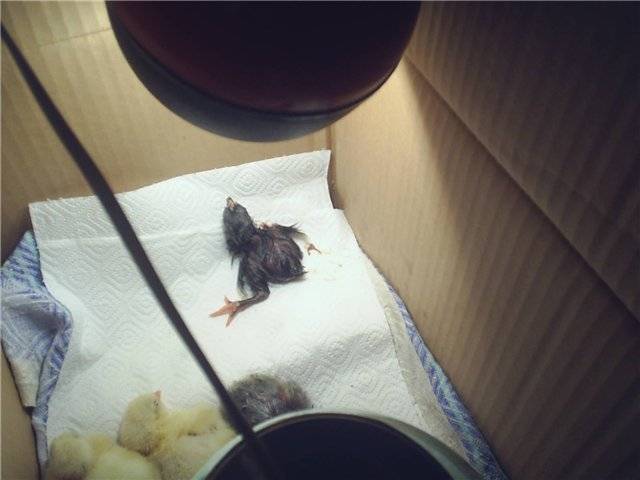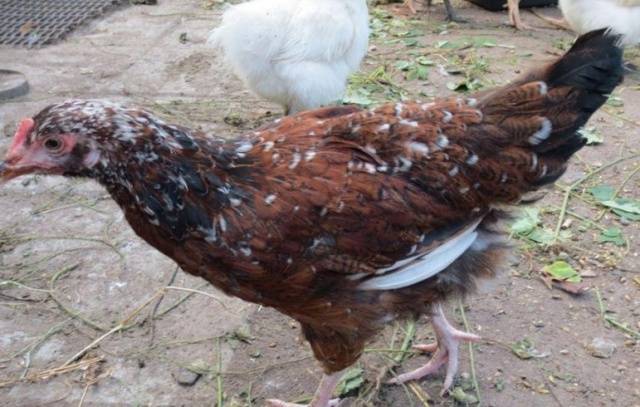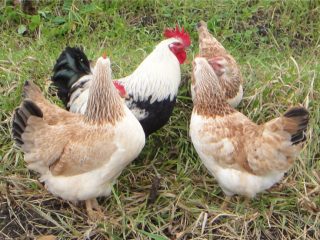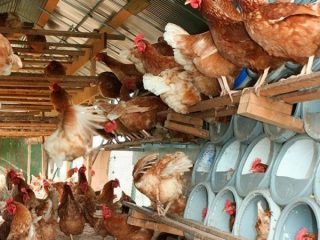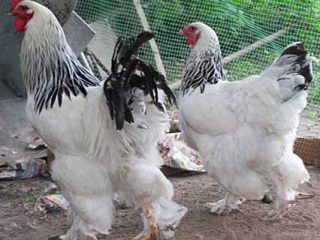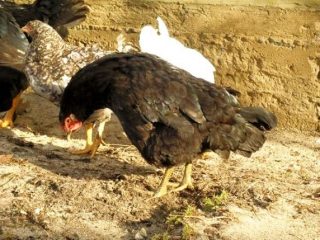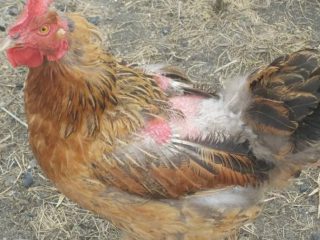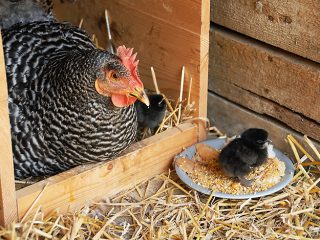Content
The modern Livensky breed of chickens is the product of the work of specialist breeders. But this is a restored version of Russian chickens of folk selection. The initial productive characteristics of the Liven Calico chicken breed were very good for the beginning of the 20th century. But with the advent of specialized crosses, Livenskaya quickly lost ground and practically disappeared. Only the work of enthusiasts made it possible to preserve this breed, but in a slightly modified form.
Story
At the very end of the 19th and beginning of the 20th centuries, poultry production areas began to emerge in the Russian Empire, specializing in breeding chickens for meat and eggs. At that time, the largest eggs were obtained in Yeletsky and Livensky districts of the Oryol province.
The egg products of these counties were especially valued in England. If you believe the Poultry Farming magazine published in 1903, then that year 43 million 200 thousand eggs were exported from Liven. However, the question arises: “how many chickens were there in Livny and the surrounding area, if at that time laying hens produced a maximum of 200 chickens?” eggs per year." Simple arithmetic shows that there should have been more than 2 million laying hens. Even with the good development of poultry farms in the county, the figure looks unrealistic. If we consider that 200 pcs. eggs per year were then produced by the best egg-laying breeds, which were simply fantastic.In the Yaroslavl province, peasants fed only about 100 thousand chickens for meat. Most likely, a zero, or even two, was added to the above figure of exported eggs.
But in any case, the eggs of Liven chickens were very large in size for those times (55-60 g), for which they were valued in Great Britain.
In the situation with Livensky-Yeletsk eggs, an interesting phenomenon was observed, which could not but interest Russian scientists of that time: chickens laid large eggs only in this area. Because of this circumstance, scientists from the Russian Department of Agriculture became interested in the question “what breed lays such large eggs”. In 1913-1915, a massive census of all chickens raised by peasants was carried out in this region. The discovered population was divided into five "races". They were divided not by productivity or appearance, but solely by plumage color. The Liven Calico breed of chickens was not noted, but Yurlovskikh vocal, distinguished by large eggs and large live weight. This was one of the few large-scale attempts to census peasant households and livestock.
Two years later, Russia had no time for agricultural economics. After order was restored, work on studying local poultry in the central zone of Russia continued. The work was carried out from 1926 for 13 years. All collected data concerned only the Yurlovsky vociferous. Again not a word was said about the Livenskys. During the Second World War, almost the entire poultry population in the occupied areas was eaten. In the Livensky vicinity only a small number of pure chickens survived.
To clarify the state of private poultry farming in the liberated areas, the poultry farming department of the TSHA organized expeditions. Including the Livensky district. Ya.Ya. Based on the results of the first study, Shapovalov described the appearance of the chicken most characteristic of the Livensky region:
- weight 1.7-4.0 kg;
- the comb is leaf-shaped and rose-shaped (almost equally);
- lobes are usually red;
- the metatarsus are yellow, unfeathered in 80% of chickens;
- the predominant color is black and yellow;
- egg length 59 mm, width 44 mm;
- more than 60% of eggs have colored shells.
In fact, Shapovalov “designated” the surviving chickens of the Livny neighborhood as a breed by describing them. In his opinion, Asian breeds participated in the formation of this livestock. But later the version of the origin of the Liven livestock was changed. There was an assumption that the appearance of the Livenskys was significantly influenced by the Yurlovsky breed. That is, Yurlovskaya vociferous + local outbred = Livenskaya breed of chickens. Such crosses reached a live weight of 4 kg for laying hens and 5 kg for roosters. The mass of the eggs was 60-102 g.
Due to the size of the eggs, the Liven poultry population has become of serious importance for agriculture. Shapovalov attributed the difference in egg weight to the diversity and richness of vegetation in the study areas. The maximum egg weight was in areas with a rich food supply.
But the obtained characteristics of the newly-minted Liven breed of chickens did not provide information on many productivity indicators. Therefore, in 1945, a repeat study was carried out in the Nikolsky and Livensky districts. 500 heavy eggs from large chickens were collected for subsequent incubation at the TSHA department.
At that time, Leghorns began to gain popularity and it was necessary to find out the characteristics of reproduction and development of local chickens in comparison with the Italian breed.
In the post-war years, there was no need to sort out feed, and the chickens were fed barley, oats and bran. But even on this meager diet, interesting data were obtained. The pullets weighed 2.1 kg, the cockerels - 3.2 kg. The variability of traits among the livestock was only 6%. Thus, chickens from the outskirts of the city of Livny could indeed be classified as a breed created through folk selection. According to the productive characteristics, Livensky chickens belonged to the meat-egg type. They reached full development by the age of one year, that is, they were late ripening. This state of affairs did not satisfy the authorities, who needed to increase the speed of agricultural production.
After Stalin’s death, Khrushchev came to power, and the USSR was given the global task of “catching up and overtaking America.” And pragmatic Americans preferred to raise broiler and egg crosses, without chasing the appearance of chickens. Something had to be done about the backlog.
In 1954, the same Shapovalov proposed crossing half of the Liven chicken flock with Kuchin Jubilee breed roosters instead of the originally planned New Hampshire ones. At that time Kuchin anniversary egg production was higher and live weight gain was better.
In 1954, backcrossing actually happened. Next, two groups of the Livensky herd bred within themselves, recording the result. The lower productivity indicators were established:
- egg production more than 50 pcs.;
- live weight from 1.7 kg;
- egg weight at least 50 g.
Based on these indicators, only 200 individuals were selected from a total herd of 800 animals. At the same time, it turned out that with proper breeding and selection, the purebred group shows results no worse than birds crossed with Kuchinsky roosters.
As a result of selection to increase egg production, by 1955 it was possible to increase the indicators from 60 pcs. in 1953 to 142 eggs in 1955. Live weight was also increased. Laying hens began to weigh 2.5 kg, roosters - 3.6 kg. The weight of the egg also increased to 61 g. But the number of hens prone to incubation decreased to 35%.
By 1966, native chickens no longer met the needs of poultry farms, and they began to be replaced by industrial crosses. Although local breeds are still used to develop new lines of crosses, by 1977 the Liven chicken was considered extinct.
In 2009, chickens matching the description of the Livensky Calico breed suddenly appeared at a regional exhibition in Poltava. Photos of the “old” chickens of the Liven breed have not been preserved, so it is impossible to say exactly how well the newly discovered birds correspond to the old standards.
During the years when industrial chickens were bred at poultry farms, the Livensky chickens that remained with private owners were chaotically crossed with other breeds. An accident helped revive Livenskaya.
The family of amateur poultry farmers did not set such a goal for themselves. They collected different breeds of chickens in their yard. And they went to buy Poltava chintz. But for some reason the seller called the sold bird Livenskaya. Numerous checks have confirmed that this is indeed a miraculously preserved Liven breed of chickens, which found its second home in Ukraine.
Description
Today's Livenskaya breed of chickens is of the meat-egg type, like its ancestors.Large, weighing up to 4.5 kg, the roosters of the Livensky calico breed look impressive even in the photo; the chickens are practically not inferior to them in size. The live weight of an adult laying hen is up to 3.5 kg.
The head is small, with a red face, crest, earrings and lobes. The comb is often leaf-shaped, but rose-shaped is not uncommon. The beak is yellow-brown or black-brown. The eyes are orange-red.
The neck is short, thick, set high. The body is located horizontally to the ground. Silhouette of a triangular shaped rooster. The back and lower back are wide. The chest is fleshy, wide, protruding forward. The tail is short and bushy. The braids are poorly developed. The belly is full and well developed in chickens.
Legs of medium length. The metatarsals can be yellow or pink, sometimes grayish or green.
The color today is mainly variegated (calico), but birds of black, silver, yellow and golden colors are also often found.
Productivity
Chickens are late-ripening and reach full weight by the age of one year. The meat is tender. The weight of a gutted carcass can reach 3 kg.
Egg production up to 220 pcs. in year. The eggs are large in size. Pullets rarely lay eggs weighing less than 50 g. Subsequently, the weight of the eggs increases to 60-70 g.
This circumstance makes them similar to the Yurlovsky vociferous ones. Today, the shells of Liven chicken eggs have various shades of brown. White eggs are almost never seen anymore.
Advantages
Livensky have soft, tasty meat and large eggs. The breed is distinguished by its large size and relatively high egg production, which decreases little even in winter.
Livenskys are unpretentious in maintenance, like any native breed, and in the summer they can provide themselves with vitamin and animal nutrition. According to reviews from poultry farmers, the Liven breed of chickens, even today, are often fed the old fashioned way: first with crushed grain, and then with wheat alone. The breed tolerates frosty winters well and is resistant to infectious diseases.
Their incubation instinct raises doubts. According to the description, the Livenskaya breed of chickens incubates well, but there are no photos of the hens with chickens. The statement about 200 pieces also comes into conflict. eggs per year and hatching only 2 broods per season. Either the chicken lays eggs or hatches about 20 eggs. eggs at a time.
But you can find photos of Livensky chickens in the incubator.
Flaws
Judging by the reviews, the Liven calico breed of chickens requires additional costs for insulating the premises at an early age. This is a long-feathered breed that requires elevated air temperatures for a long time. Some poultry farmers believe that the breed is characterized by cannibalism. Chickens can peck laid eggs.
Character
Due to the fact that from the very beginning it was a breed group, and even now there is no confidence in the presence of the Livenskaya breed, and not just motley chickens, they say different things about the character. According to some reviews, the chickens are very restless and timid, but the adult bird becomes calm. Others argue that there is no single model of behavior among chickens of the Liven breed. With similar plumage colors, birds behave differently.
The same goes for roosters. Some can fight with dogs and birds of prey, while others are quite calm. But today, during selection, roosters with the first behavior model are rejected, since they also show aggression towards people.
Reviews
Conclusion
The survival of the true Livensky breed somewhere thousands of kilometers from its “homeland” is hardly possible. Simply because the owners of private farmsteads in the villages had neither the physical nor the financial ability to keep the breed clean for almost 40 years. There was also a lack of education and understanding of how to properly conduct breeding work. Therefore, the “suddenly revived” Livenskaya breed of chickens is most likely a mixture of cheaper breeds.But the marketing ploy of “revival of a rare breed” makes it possible to sell crossbred chickens much more expensive than purebred chickens of the same breeds.
